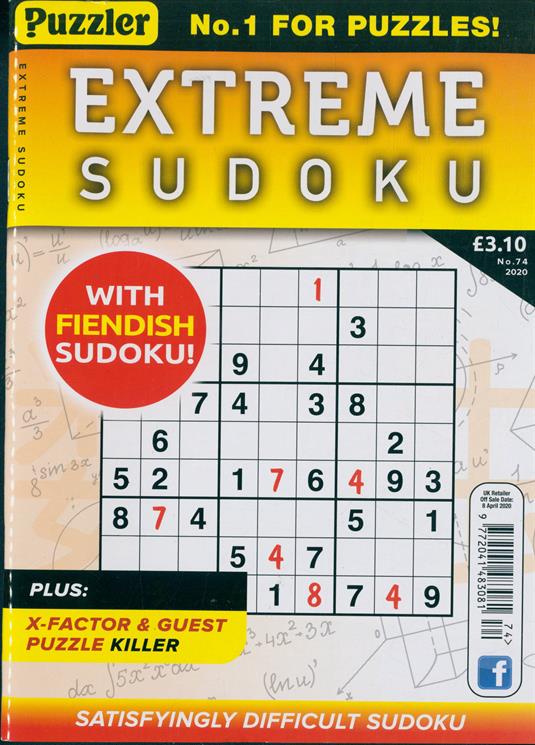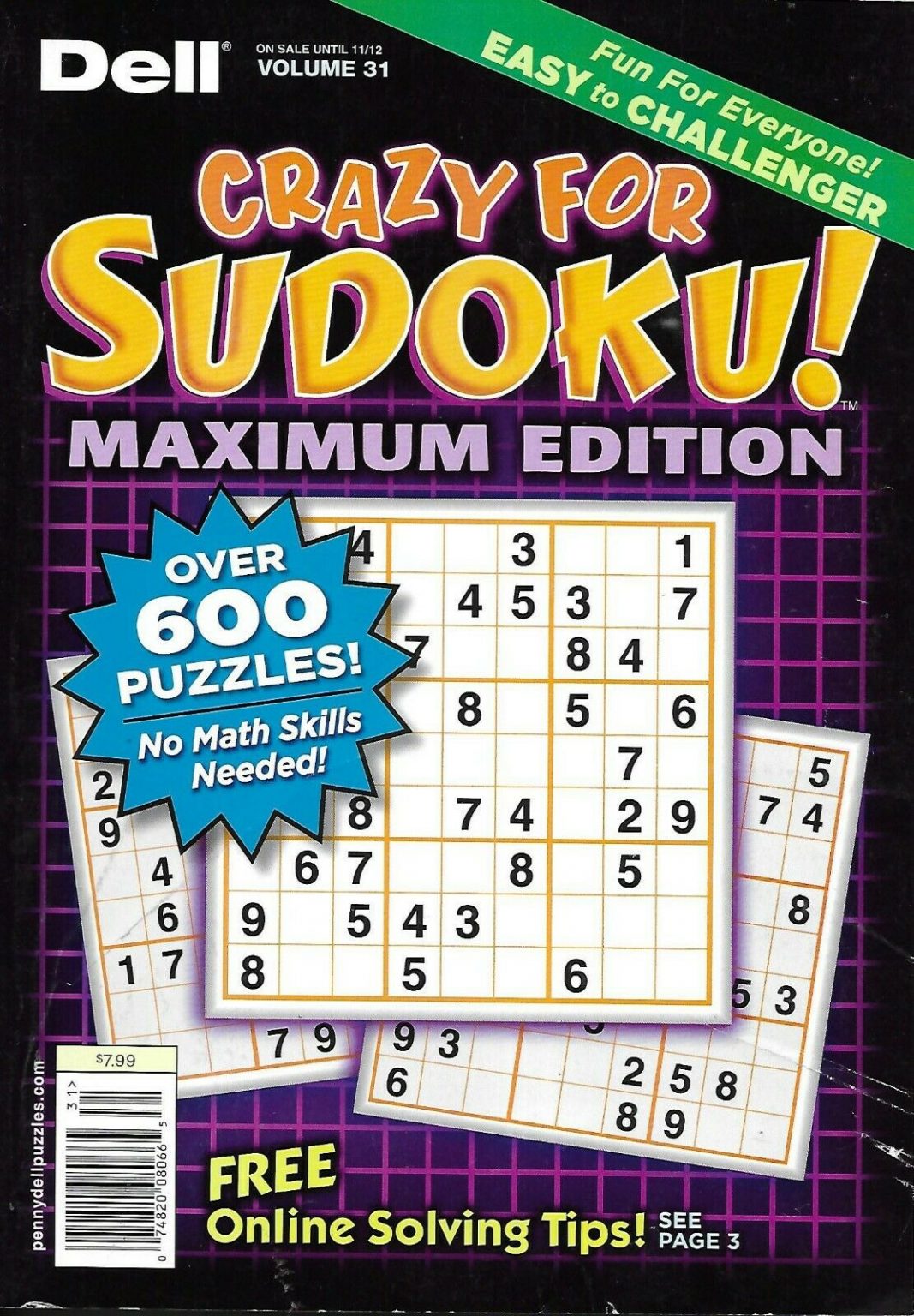


Although they were unmarked, each 3×3 subsquare did indeed comprise the numbers 1–9, and the additional constraint on the broken diagonals led to only one solution. It simplified the 9×9 magic square puzzle so that each row, column, and broken diagonals contained only the numbers 1–9, but did not mark the subsquares. On July 6, 1895, Le Siècle 's rival, La France, refined the puzzle so that it was almost a modern Sudoku and named it carré magique diabolique ('diabolical magic square'). It was not a Sudoku because it contained double-digit numbers and required arithmetic rather than logic to solve, but it shared key characteristics: each row, column, and subsquare added up to the same number. Le Siècle, a Paris daily, published a partially completed 9×9 magic square with 3×3 subsquares on November 19, 1892. Number puzzles appeared in newspapers in the late 19th century, when French puzzle setters began experimenting with removing numbers from magic squares.


History From La France newspaper, July 6, 1895: The puzzle instructions read, "Use the numbers 1 to 9 nine times each to complete the grid in such a way that the horizontal, vertical, and two main diagonal lines all add up to the same total." Predecessors newspaper, and then The Times (London), in 2004, thanks to the efforts of Wayne Gould, who devised a computer program to rapidly produce unique puzzles. However, the modern Sudoku only began to gain widespread popularity in 1986 when it was published by the Japanese puzzle company Nikoli under the name Sudoku, meaning "single number". The puzzle setter provides a partially completed grid, which for a well-posed puzzle has a single solution.įrench newspapers featured variations of the Sudoku puzzles in the 19th century, and the puzzle has appeared since 1979 in puzzle books under the name Number Place. In classic Sudoku, the objective is to fill a 9 × 9 grid with digits so that each column, each row, and each of the nine 3 × 3 subgrids that compose the grid (also called "boxes", "blocks", or "regions") contain all of the digits from 1 to 9. The first of his computer-generated puzzles were printed in The Times of London in 2004. The spread of the number puzzle within Europe (and eventually back to the United States) led to a worldwide sudoku craze.Sudoku ( / s uː ˈ d oʊ k uː, - ˈ d ɒ k-, s ə-/ Japanese: 数独, romanized: sūdoku, lit.'digit-single' originally called Number Place) is a logic-based, combinatorial number-placement puzzle.
DELL EXTREME SUDOKU MAGAZINE SOFTWARE
After enjoying a book of sudoku puzzles in Tokyo, he developed a computer software program to create more. Wayne Gould, a retired judge from Hong Kong, reintroduced sudoku puzzles to the Western world. To the delight of many, sudoku puzzles were published in magazines and newspapers across the country. Therefore, a game that included numbers instead of characters was ideal for Japanese publications. Sudoku became extremely popular in Japan due to its rules and nature because of the characters used in the Japanese language, crossword puzzles were impractical to make and play. As Number Place gained popularity in the United States, the puzzle eventually traveled over to Japan in 1984. In Japan, Number Place was renamed “sudoku.” Sudoku is a shortened word for the phrase, “ Sūji wa dokushin ni kagiru,” which translates to “the digits are limited to one occurrence.”


 0 kommentar(er)
0 kommentar(er)
